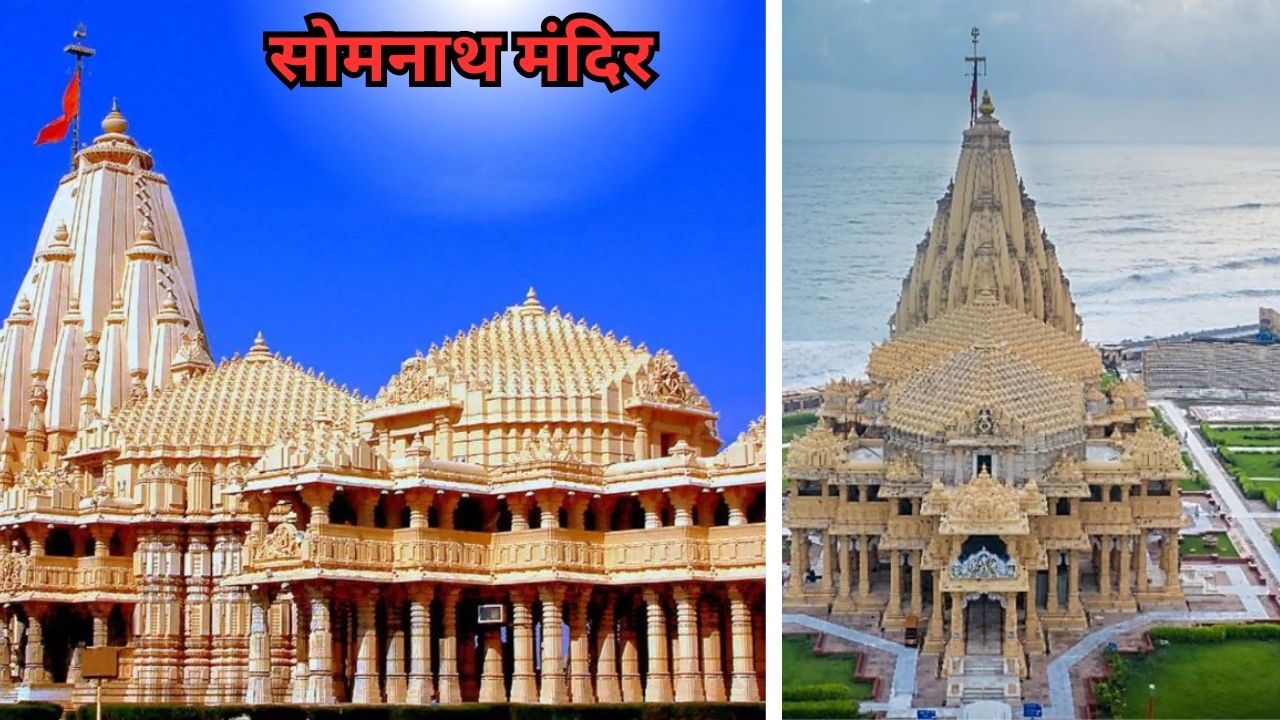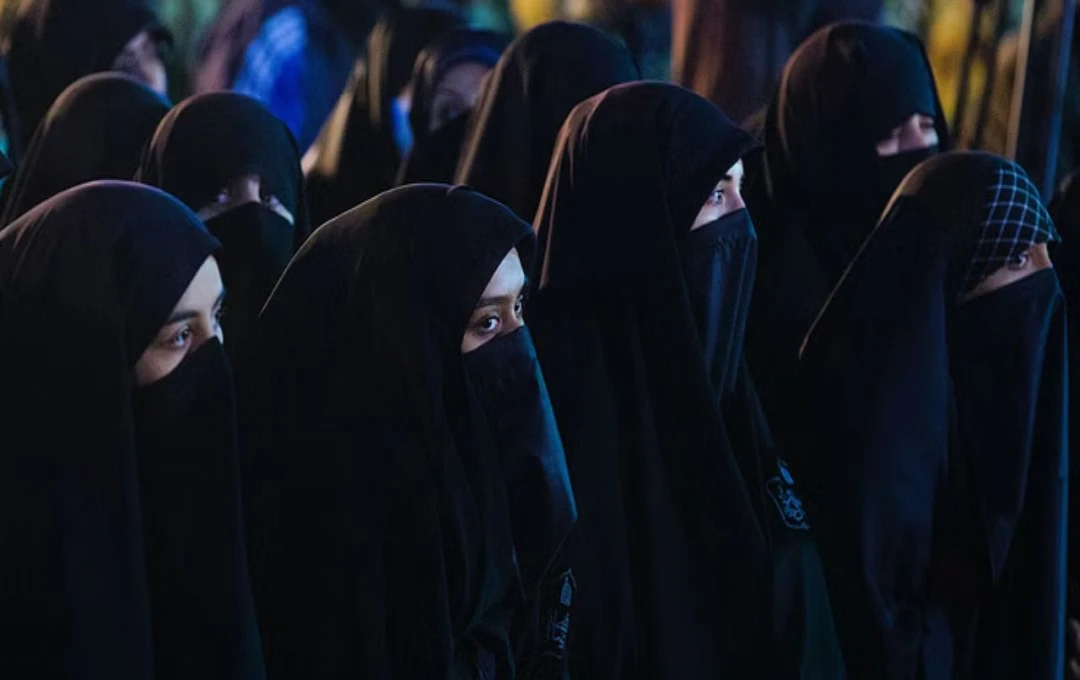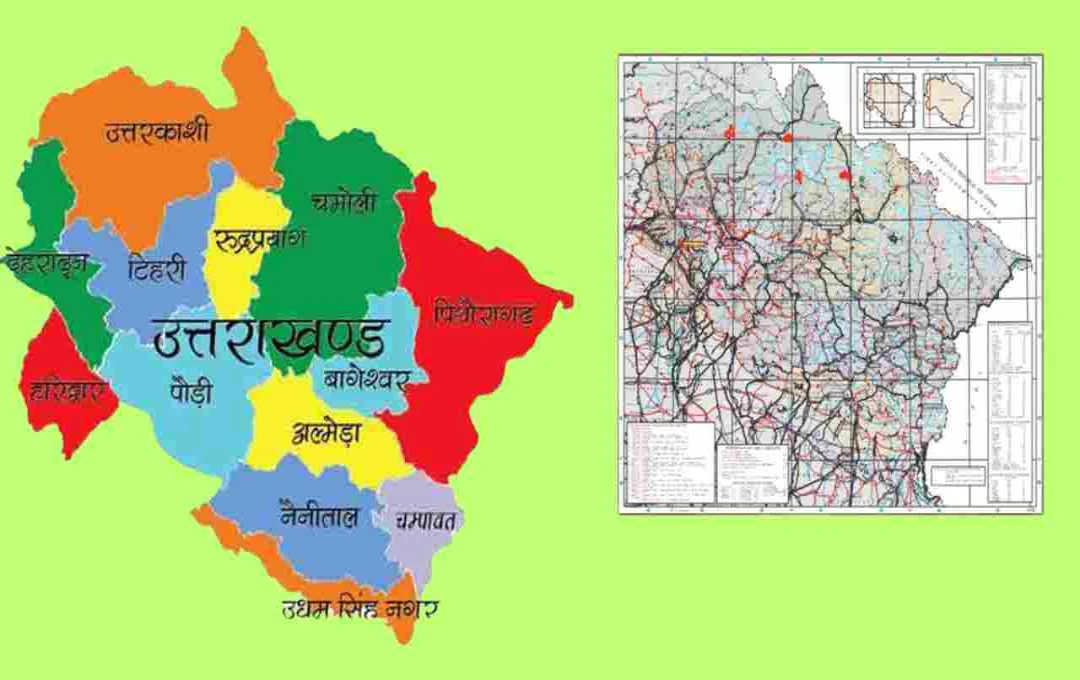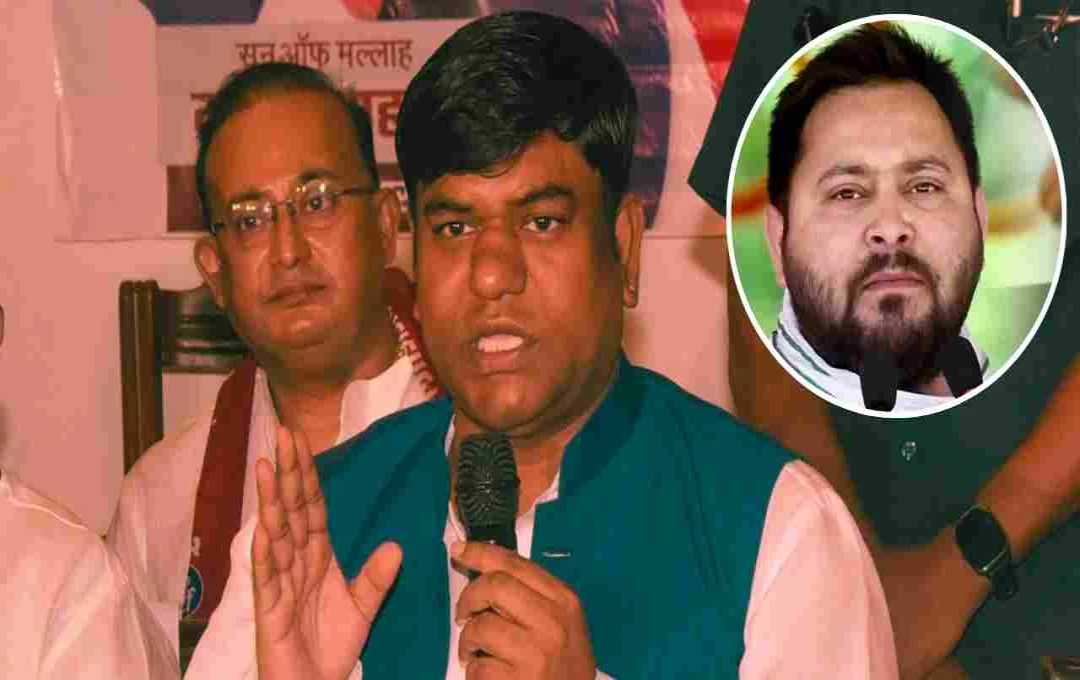Amazing Architecture, Royal Design, and Intriguing Facts about the Somnath Temple
The Somnath Temple is considered the first of the twelve major Jyotirlingas dedicated to Lord Shiva. It is believed that this prestigious temple, located on the coast of Kathiawad in Gujarat, was built by Lord Chandra himself. The divine Jyotirlinga is described in various religious texts, including the Skanda Purana, the Shrimad Bhagavad Gita, and the Shiva Purana. It is believed that this sacred place has existed throughout the ages. After India's independence, the then-Home Minister, Sardar Vallabhbhai Patel, facilitated the reconstruction of this revered Jyotirlinga of Lord Shiva. Devotees of Lord Shiva can be found offering their devotion here daily.
The ancient Somnath Temple is reconstructed in the Chalukya style, showcasing exquisite ancient Hindu architecture. The unique architecture and grandeur of this temple mesmerize visitors. The southern part of the temple features impressive pillars, called "bamboo pillars," with an arrow placed on top, symbolizing the fact that there is no land between this sacred temple and the South Pole.
The first Jyotirlinga of Lord Shiva, Somnath, is divided into three parts: the sanctum sanctorum (garbhagriha), the dance hall (nṛtyamanḍapa), and the assembly hall (sabhamanḍapa). The temple's spire is approximately 150 feet tall. The main kalash of the temple weighs about 10 tons, and its flag is 27 feet high. The temple complex spans approximately 10 square kilometers and includes 42 temples. It is also the confluence point of three rivers—Hirany, Saraswati, and Kapila—where devotees take a dip with devotion.
Inside the temple are statues of Parvati, Lakshmi, Ganga, Saraswati, and Nandi. At the upper part of this sacred place, a beautiful statue of Ahalyeshwar is installed atop the Shiva Linga. Within the temple complex, there is also a magnificent temple dedicated to Lord Ganesha, as well as a statue of Aghoralinga outside the north wall. A Shiva linga is installed near the sacred Gauri Kund lake. Additionally, the temple complex houses a magnificent temple of Mata Ahalyabai and Mahakali.
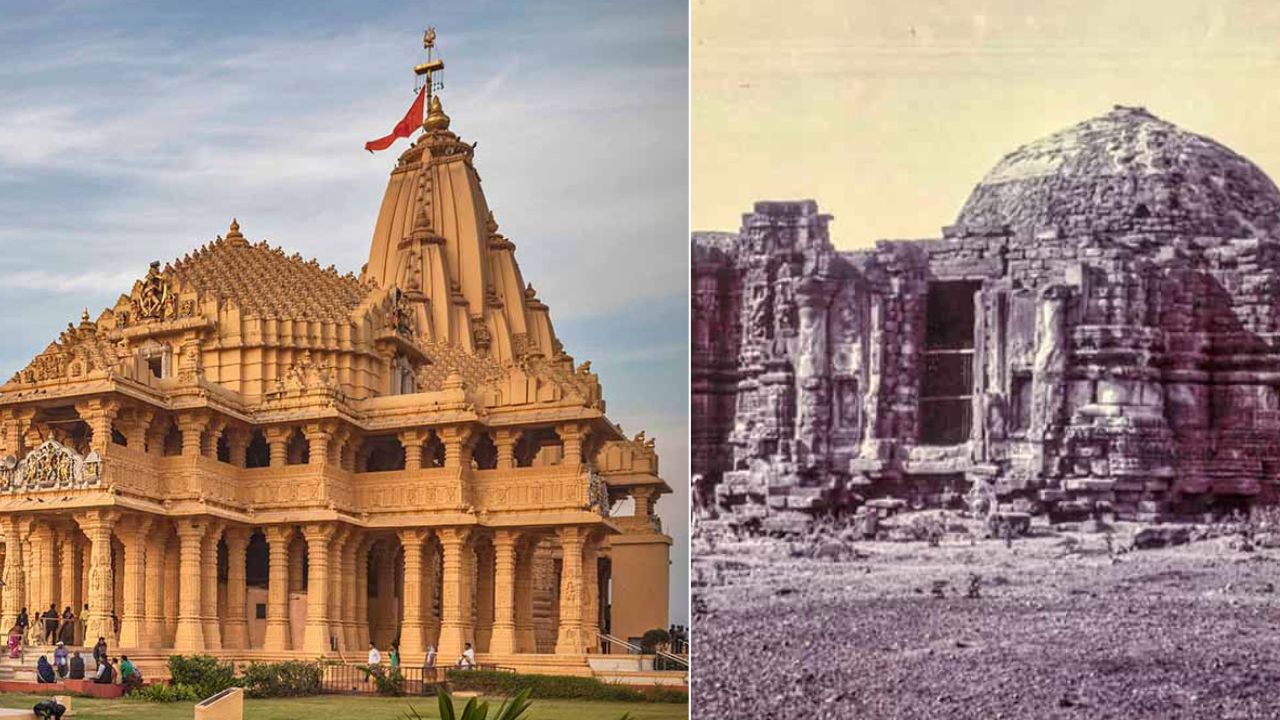
The Somnath Temple is renowned for its unique and ancient history, which contains many interesting facts that captivate and amaze people. This temple is closely associated with Lord Krishna, who is believed to have left his mortal body here. The temple is also famous for the looting incident by Mahmud of Ghazni, which made it world-renowned.
It is believed that the doorkeepers of the Somnath Temple, now housed in Agra, were captured by Mahmud of Ghazni during the looting. Every night, a one-hour light show is held at the temple, depicting the history of Hindus. Performing shraddha during the months of Kartik, Chaitra, and Bhadrapada is considered very important in the Somnath Temple, attracting a large number of devotees during these months.
Muslims require special permission to enter this temple for security reasons, and they are allowed entry only after obtaining permission. Dwarka city, approximately 200 kilometers from the Somnath Temple, is where people from far and wide come to visit the Dwarkadhish Temple.
Located in Prabhas Patan, near Veraval port in Gujarat, Somnath is the first of the 12 major Jyotirlingas in India. The temple's administration and maintenance are handled by the Somnath Trust, which is supported by the government through land and other resources. A ritualistic bath called Triveni Snan is performed at the confluence of the three rivers—Hirany, Saraswati, and Kapila.
"Somnath" translates to "Lord of the Moon" or "God of Gods." This temple is situated in a location where there is no land between it and the South Pole.
The temple conducts three aartis daily and remains open to visitors from 6 am to 9 pm. The architectural beauty of the Somnath Temple attracts everyone, and millions of people visit it every day to witness it.
